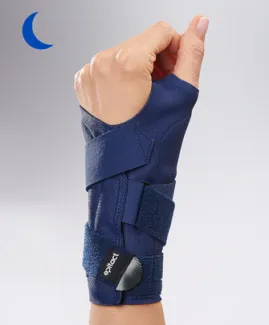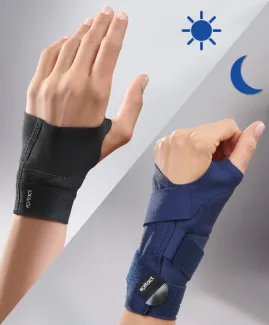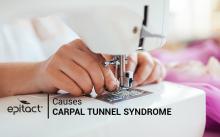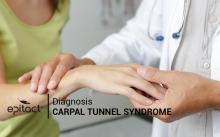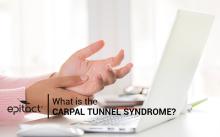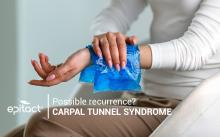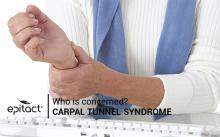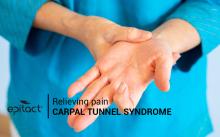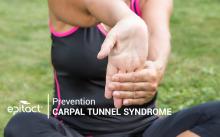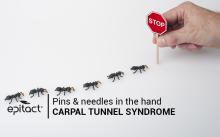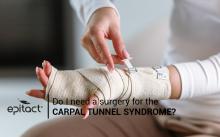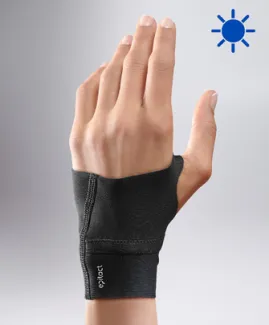
Carpal Tunnel Syndrome
Carpal tunnel wrist supports and braces to relieve pain and tingling in your hand.
Free Shipping 
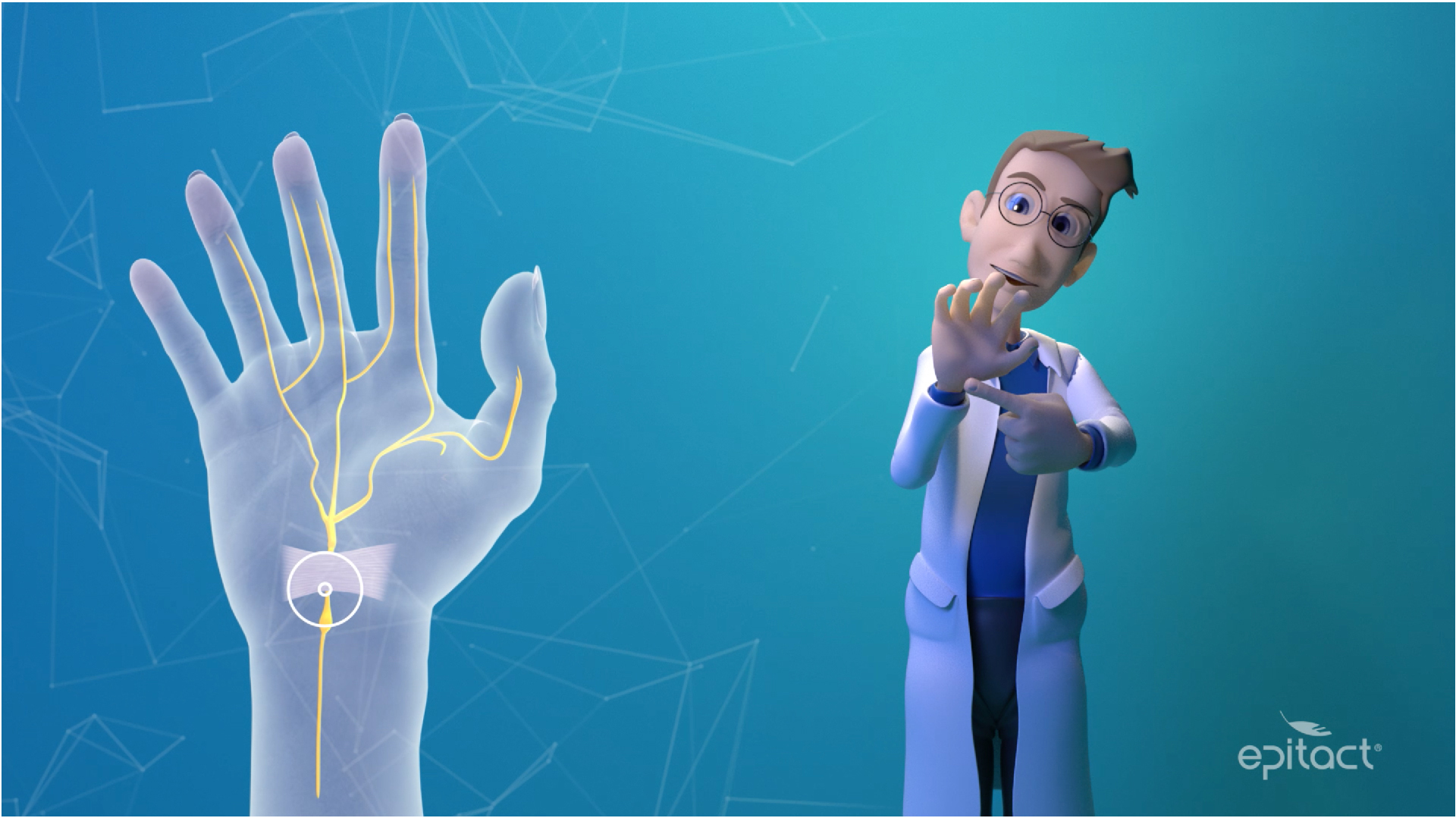
What is carpal tunnel syndrome?
Carpal tunnel syndrome (CTS) affects approximately 162,000 people in the United Kingdom(1). This neurologic disease is due to the compression of the median nerve which travels through the carpal tunnel.
Symptoms of carpal tunnel syndrome
The carpal tunnel is a rigid narrow passageway at the base of the hand that contains the median nerve and the nine flexor tendons (which bend the fingers). For several reasons, the space within the carpal tunnel can be reduced and then the median nerve is squeezed or compressed. Note that the role of the median nerve is to give feeling to the hand and three and a half first fingers (from the thumb to the middle of the ring finger). It also controls the muscles at the base of the thumb.
As it is compressed, the feeling and action of the tendons are altered and you experience pain, weakness, numbness and tingling in your hand and fingers. Those symptoms often occur at night or in the morning when you awake.
What causes carpal tunnel syndrome?
Some people are more likely to develop carpal tunnel syndrome due to numerous causes and risk factors:
- anatomical factor (carpal tunnel is naturally narrower);
- health conditions (arthritis, diabetes, obesity…);
- people after 40 years, especially women;
- pregnancy and menopause;
- hand and wrist overuse (repetitive, prolonged traumatic movements, extreme flexion and extension of the wrist…). In the professional context, workers who do repetitive tasks or harmful movements are the most at risk. However, similar actions in a domestic or recreational setting can produce the same effects.
How to prevent and treat pain in the hand and tingling caused by CTS?
Carpal tunnel wrist splints and braces are part of the first treatments for carpal tunnel syndrome. In addition to wearing a carpal tunnel brace for wrist support, focus on prevention. Limit your exposure to repetitive movements, extreme flexion/extension of the wrist, vibrations, humidity and cold temperatures for example. Your healthcare provider can also recommend you exercises or prescribe you medicines (pain killers, anti-inflammatories, cortisone injections).
When medical treatments do not work or in case of severe symptoms, he may recommend you surgery. This procedure consists of cutting the carpal ligament (the inferior side of the tunnel) to release the median nerve.
The EPITACT® carpal tunnel brace and wrist support
EPITACT® has created two complementary carpal tunnel wrist support braces to relieve carpal tunnel syndrome. The flexible carpal tunnel wrist support CARP’ACTIV™* is adapted to daily use as it helps you correct harmful movements during manual activities. To reduce pain and tingling in your hands at night, the rigid carpal tunnel wrist brace CARP’IMMO™* is ultra-comfortable. It immobilises your wrist in a resting position to reduce the compression of the median nerve. For optimal relief, EPITACT® suggests you a special offer* combining both the flexible and rigid wrist support braces!
(1)Habib K. Estimation of Carpal Tunnel Syndrome (CTS) Prevalence in Adult Population in Western European Countries: A Systematic Review. European Journal of Clinical and Biomedical Sciences. 1 janv 2017;3:13.
*These solutions are class I medical devices that bear the CE marking under this regulation. Carefully read the instructions before use. Manufacturer: MILLET Innovation. 11/2021
Carpal tunnel syndrome is linked with poor blood circulation.
FALSE! The symptoms of CTS (tingling in the hand and fingers, loss of sensitivity...) are not related to poor blood circulation but to a nerve problem. Indeed, the median nerve, which is responsible (neurologically) for the flexion of the thumb, index and middle finger, is compressed inside the carpal tunnel located in the wrist. Hence the interest of wearing a carpal tunnel wrist brace that supports the wrist both day and night.
Carpal tunnel syndrome is linked to osteoarthritis.
SOMETIMES – Carpal tunnel syndrome has many causes, one of them being osteoarthritis. Osteoarthritis of the wrist is often related to a history of trauma (fracture): it can cause a bone growth that leads to the narrowing of the carpal tunnel. As a result, there is less space inside this tunnel and the median nerve is compressed.
Carpal tunnel syndrome is common during pregnancy.
TRUE! CTS is frequent in pregnant women. The hormonal changes that occur during pregnancy can increase water retention and facilitate the development of a swelling (œdema). Tissues swell, including those in the wrist, what reduces the space inside the carpal tunnel and increases the nerve compression.
 Pharmacie
Pharmacie